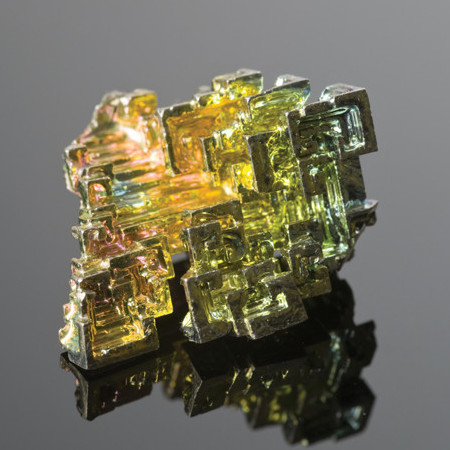An overview - Bismuth: The strangest and most underrated element
2025-03-24
Introduction of Bismuth
In fact, bismuth is much more common than we think. If you're in the materials industry, with a particular focus on advances in superconductivity and semiconductors, then “bismuth” has been on your radar a lot in recent years. Even if you're not familiar with these high-tech fields, if you've experienced stomach ulcers due to dietary irregularities, if your favorite color is “cherry blossom yellow,” or if you're into beauty, you've probably come across bismuth before.
Germany's Max Planck Institute for Solid State Physics and Materials has described in the journal Nature, “Bismuth is probably one of the most peculiar and underestimated elements in the periodic table.
Colorful Bismuth
While pure bismuth monomers are silvery-white to pinkish-red metals, the surface of the bismuth crystals we usually see has a brilliant iridescent luster and is often used in crafts. Why is this? This is because when the molten bismuth slowly cools and crystallizes, its surface will be oxidized to form a thin and thick oxide film, which interferes with the light to give a colorful effect. The colorful effect is created when light interferes with the film.

Industrial smelting of bismuth
Bismuth (Bi), atomic number 83, is located in group VA of the sixth cycle of the periodic table. Mercury, lead, thallium, arsenic, antimony, and polonium distributed around its position are highly toxic, while bismuth is almost non-toxic to humans.
In nature, the abundance of bismuth is close to that of silver, and common bismuth ores include bismuth pyroxene (Bi2S3), bismuth vesicular (Bi2O3), and bismuth rhodochrosite (nBi2O3-mCO2-H2O).
Fire refining bismuth: It is divided into two parts: crude refining and refining, crude refining is commonly mixed smelting method, i.e. mixing bismuth sulfide and bismuth oxide ore, and at the same time carrying out precipitation smelting of bismuth sulfide and reduction smelting of bismuth oxide to get crude bismuth. The crude bismuth will be refined, mainly through the oxidation method to remove the arsenic, antimony, tellurium and other impurities, and then get the refined bismuth, melting and casting into ingots.
Wet refining of bismuth: Take bismuth pyroxene as an example, the ore is crushed after primary selection, and then the ore powder is oxidized by ferric chloride solution acidified with hydrochloric acid:
Bi2S3+6FeCl3→2BiCl3+6FeCl2+3S
Bismuth in daily life
1.If you have an eyeshadow palette in your hands, take a look at the ingredient list. If you are careful, it is not difficult to find the ingredient CI 77163 in the ingredient list which is found in all major makeup and skin care products. This is Bismuth Oxychloride, the first pigment to synthesize a non-toxic pearl luster.

2. Non-toxic "Primrose Yellow"
In 2017, the color of the year chosen by Pantone was called “Primrose Yellow”. This yellow color comes from the pigment bismuth vanadium yellow, whose main component is bismuth vanadate (BiVO4). It is one of the few non-toxic yellow pigments, and can be used as a direct replacement for the toxic lead-chrome yellow.
3. Semiconductor
Bismuth-containing semiconductor materials are widely used in the electronics industry, the more widely used is Bi-Te-Se temperature difference cooling components.
The use of multi-stage thermoelectric cooling can make the temperature down to below 200K, which is useful in the military, aerospace industry, scientific research experiments: BiSbTe3 can be used as a temperature difference in electrical components for solar cells, BiTe2 for the manufacture of low-temperature temperature difference power supply, BiAgS2 used in the manufacture of semiconductor devices and so on.
Previous page:
Next page:
Blog update
What are the types of chemical materials
2024-11-05
What do chemical materials do?
2024-11-05
What are the industrial chemicals
2024-11-05

